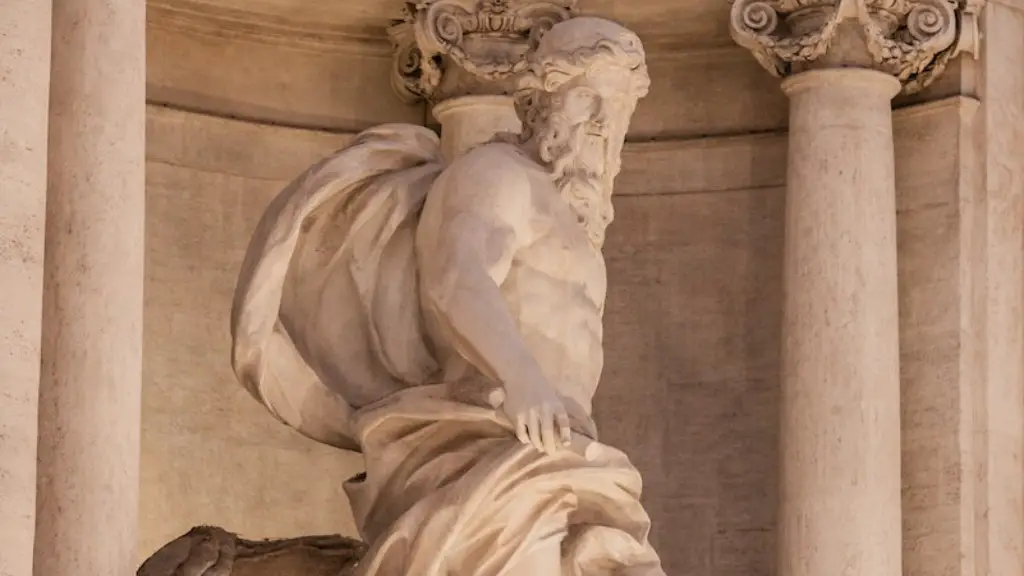In ancient Rome, a paterfamilias was the head of a household. He was responsible for the welfare of his wife, children, and slaves. The paterfamilias was also the legal guardian of his children and the administrator of his household. He had the power to discipline his wife and children, and to sell or free his slaves.
A paterfamilias in ancient Rome was the father of the family. He was the head of the household and had complete control over the lives of his wife and children.
What does the Roman word pater mean?
A father is the male parent of a child. The father is the head of the household and the primary provider for the family. The father is also the founder or patriarch of the family.
The “paterfamilas” was the father of the Roman family and the head of the household. He was the only male in the family who enjoyed the full legal rights and protection under Roman law. The father had the power to veto any decision made by the family, and he had the right to reject any marriage proposal made to his daughter.
When did a man become a paterfamilias
A man became a paterfamilias when his own father died. This was the traditional role of the head of the household in Roman society. The paterfamilias was the primary breadwinner and held a great deal of authority over the other members of the household. He was responsible for the welfare of his wife and children and had the power to discipline them if necessary.
The paterfamilias was the head of the household and had legal authority over the other members of the household. He decided who his children would marry and issued punishment for any family member that disobeyed him. In early Rome, he could even have family members put to death, but this rarely actually happened.
What did Romans call their children?
The praenomen was the first part of a Roman name. It was a personal name and was the closest thing that the Romans had to the first names we have today. A child would be officially given their praenomen at a purification ceremony known as a Lustratio.
The Latin root patr means “father.” This Latin root is the word origin of a fair number of English vocabulary words, including paternity, pattern, and patron.
What power was wielded by the paterfamilias?
The paterfamilias was seen as the head of the household and had absolute power over everyone within his home. This included the power of life and death if he saw fit. Roman tradition saw the father as the supreme authority figure in the home and this was reflected in their legal system.
The paterfamilias is the head of the household/family and has absolute paternal power over all members of the family, including his wife, all children, and all relatives. He has the power to make financial, social, and legal decisions for all family members and his power is to be respected absolutely.
How was the Ancient Roman family organized
The Ancient Roman family was a complex social structure based mainly on the nuclear family. The nuclear family consisted of the father, mother, and children. However, the family could also include other members, such as extended family members, household slaves, and freed slaves.
In Rome, the legal age for boys to marry was 14. This was often significantly higher than the age of their brides, who were usually around 12. Older men who had lost their wives or been divorced often took younger brides. This was considered normal at the time.
What age did Roman men marry?
In the past, it was common for men to marry in their mid-twenties, while women married while they were still in their early teens. This was often done in order to improve the family’s wealth or class. However, times have changed and people are now more likely to choose their own partners.
The Romans were passionate about kissing and talked about several types of kissing. Kissing the hand or cheek was called an osculum. Kissing on the lips with mouth closed was called a basium, which was used between relatives. A kiss of passion was called a suavium.
How did Roman men treat their wives
It is interesting to note that Roman men were praised on their tombstones for treating their wives kindly, with the implication that such kindness was unusual. This is in contrast to the manus marriage, in which a husband could beat his wife with impunity. It seems that Roman society valued kindness and respect in marriages, even though they did not always practice it.
The social structure of ancient Rome was based on heredity, property, wealth, citizenship and freedom. It was also based around men: women were defined by the social status of their fathers or husbands. Women were expected to look after the houses and very few had any real independence.
During the Republic, wealthy citizens were able to vote and stand for office, but the poorest citizens were excluded from politics. However, all citizens were able to serve in the army.
Citizens were divided into two classes: the patricians and the plebeians. The patricians were the wealthier citizens, while the plebeians were the poorer citizens. Plebeians could not hold certain high offices, such as consul, and they were also not able to marry patricians.
Between the patricians and the plebeians was the senate, a group of wealthy citizens who advised the consuls, the highest ranking officials in the government.
Slavery was an integral part of Roman society. Slaves were owned by both patricians and plebeians, and they could be bought and sold. Slavery was not based on race, and slaves could be freed. Freed slaves were called liberti.
What did Romans call their parents?
The terms usually used to denote parenting were parens ‘parent’, pater ‘father’, and mater ‘mother’ See “Pater Familias, Mater Familias, and the Gendered Semantics of the Roman Household,” by Richard P.Paretzer.
Although the exact origins of the foundling wheel are unknown, it is believed that they were first used in the Middle Ages in Rome. mothers who could not care for their babies would anonymously deposit them in the wheel, which would rotate and allow the baby to be taken in by the convent. The foundling wheel was a way to allow these mothers to give up their babies without being seen and without judgement.
Conclusion
A paterfamilias was the father and head of a household in ancient Rome. He was the one who held ultimate authority over the family and its members.
A paterfamilias is the head of a household in ancient Rome. He was responsible for the welfare of his family and had the power to make decisions on their behalf. He was also the head of the family’s religious life and was responsible for their spiritual well-being.





